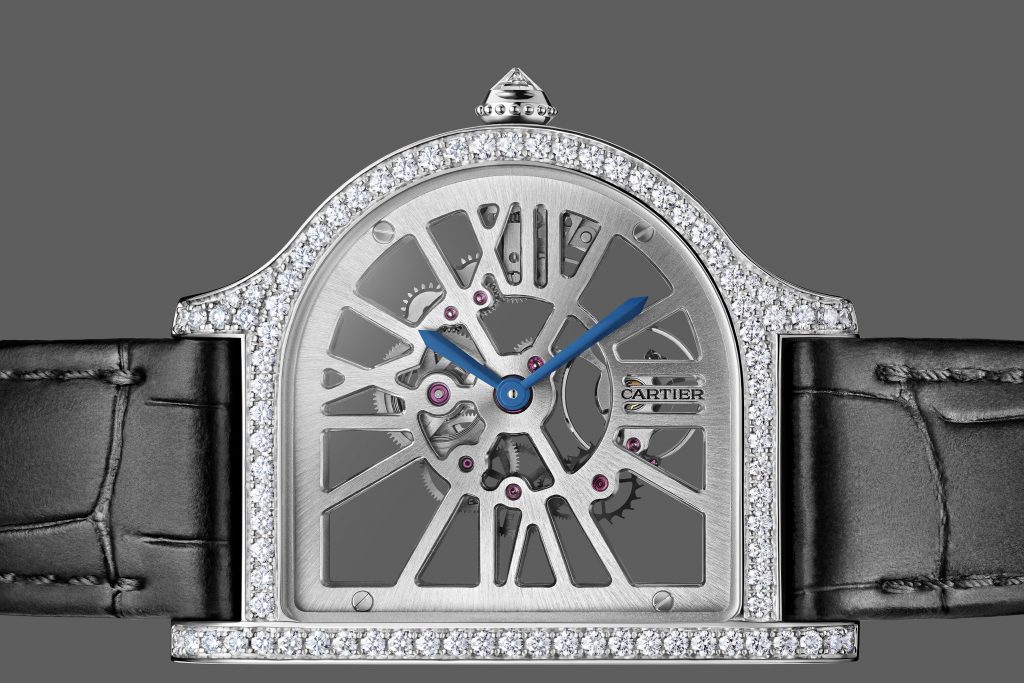Cartier Privé is Cartier’s collectors’ collection that celebrates and explores the Maison’s mythical models through numbered, limited edition watches. After the Crash, the Tank Cintrée, the Tonneau and the Tank Asymétrique, the Cloche de Cartier watch is the fifth opus by Cartier Privé.

The “cloche” (bell) shape appeared in Cartier pieces in 1920. “Cloche de Cartier”, because, when placed horizontally, its outline is reminiscent of a service bell rung at a counter. Like many Cartier signature pieces, it has been named after its shape, made notable for the purity of its line and clear inspiration. For Pierre Rainero, Director of Image, Style and Heritage at Cartier, “The Cloche de Cartier watch illustrates the Maison’s approach to shape, and how it is considered for its aesthetic but also by appreciating all of its possible evocations. It highlights the Maison’s talent at playing with simple shapes and revealing their aesthetic potential.”

The Cloche de Cartier watch is one of the rarest aesthetics in Cartier’s watchmaking repertoire. A collector’s piece that is unusual and unique in its category, it adopts all the Maison’s watchmaking codes. The “rail track” and hour markings are adapted to the dial’s asymmetrical shape and the crown is set with a cabochon. Both respectful of the Maison’s watchmaking tradition while at the same time breaking away from common- practice, this Cloche creation is unusual in that it may be read whilst worn on the wrist and can additionally be removed and placed on a table to be transformed into a “desk clock”.
Cloche de Cartier comes in two versions:
The classic Cloche de Cartier available in pink gold, yellow gold or platinum, displaying all of Cartier’s watchmaking codes: rail tracks, sword-shaped hands and a closed-set cabochon on the winding crown. It has stayed faithful to the original model’s finishes: satin-finished on the back, polished between the lugs or edges, it is powered by the 1917 MC Manufacture mechanical movement, a calibre created in 2019.

The Cloche de Cartier skeleton watch: a true technical feat in the field, that involves adapting this complication to the watch’s atypical shape. Three skeleton models complete this collection. While it showcases the immediacy of an entirely openworked dial, it required the Manufacture 1917 mechanical movement to be completely reworked into a very fine network of gears, visible through the transparent Roman numerals, now transformed into bridges. It is now known as the 9626 Cartier Manufacture movement. In the platinum version, the winding crown is set with a ruby cabochon.
